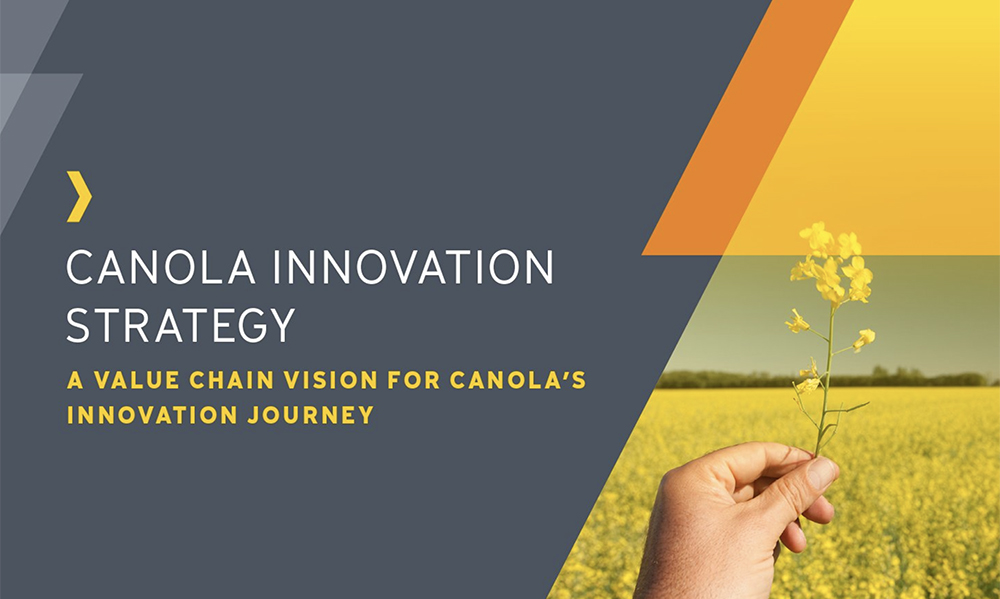Canada’s canola industry has unveiled an innovation-based strategy aimed at solidifying canola’s position as Canada’s most valuable crop and one of the world’s most important oilseeds.
The canola innovation strategy, released March 10 by the Canola Council of Canada, was the result of a year-long consultation process that involved stakeholder groups throughout the canola value chain, from farmers and researchers to processors and food companies, says Curtis Rempel, CCC’s vice-president of crop production and innovation.
The strategy draws on innovation, research and the adoption of new knowledge and technology to ensure that Canada’s canola industry is well-positioned to make sustainable and environmentally conscious contributions to the Canadian economy and global food security.
Read Also

Bunge’s crop mix is changing
Bunge has predominantly been a soybean processing firm, but that’s about to change after the merger with Viterra with softseed processing and grain merchandising gaining ground.
“The canola industry has always been driven by innovation,” said Rempel, citing milestones such as the development of canola as a high-quality edible oilseed crop, health claims based on the crop’s healthy oil profile, and the development of herbicide-tolerant production platforms that contributed to higher yields, cleaner crops and improved soil health.
“This strategy builds on that long history of innovation and adoption of innovation by our entire value chain.”
In a recent interview, Rempel described the Canola Innovation Strategy as a roadmap to the future for Canada’s $30 billion canola industry.
Through an industry-wide consultation process that took place last year, the strategy identifies key priorities where the canola sector should focus its energies.
Innovation priorities are grouped under four “pillars” in the strategy — performance, precision, protection and product.
Under the performance pillar, the goal is to increase productivity through yield intensification while meeting current and future customer needs for oil and protein. The industry aims to do this while maintaining canola as essential cropping choice for farmers, sequestering more carbon in the soil, reducing greenhouse gas emissions and contributing to environmental biodiversity.
Under the precision pillar, the industry hopes to promote the development and adoption of new and more precise field tools and technologies that increase productivity and allow the industry to more accurately measure the canola’s environmental footprint.
Under the protection pillar, the objective is to protect the crop from current and future threats, including yield-robbing pests and diseases, climate variability and disruptive market forces.
And under the product pillar, the industry aims to ensure a reliable supply of Canadian canola to domestic and international markets, while also adapting to changing market demands for oil, meal, protein and fuel.
Additional details can be viewed online at www.canolacouncil.org/research/canola-innovation-strategy/.
Rempel said increasing the productivity, profitability and marketability of canola have always been industry priorities.
Innovation, research and investments in those areas have already delivered significant benefits, he added.
What’s becoming more evident, however, is that need to address so-called sustainability challenges by improving the industry’s environmental footprint and promoting the industry’s reputation.
“Western Canadian growers, I think, already lead the world in sustainability in so many definitions of the word,” Rempel said.
“But this strategy kind formalizes an engagement around innovation….”
The industry intends to depend heavily on research, innovative products, new technologies and investment to maintain a productive, profitable and sustainable industry in the face of new threats, many of which are linked to climate change, he added.
“Many different models come to the same conclusion: On the Great Plains of North America, we’re going to have more climate extremes. So dry is going to be drier. Hot is going to be hotter. And wet is going to be wetter,” Rempel said.
“So, building a more resilient crop and adopting best management practices and crop genetics that build in that resiliency is going to be really important.”
The Canola Council said the strategy will help the Canadian industry meet its previously established production targets of increasing yields to 52 bushels per acre to meet global market demand of 26 million tonnes by 2025.
Contact brian.cross@producer.com
















